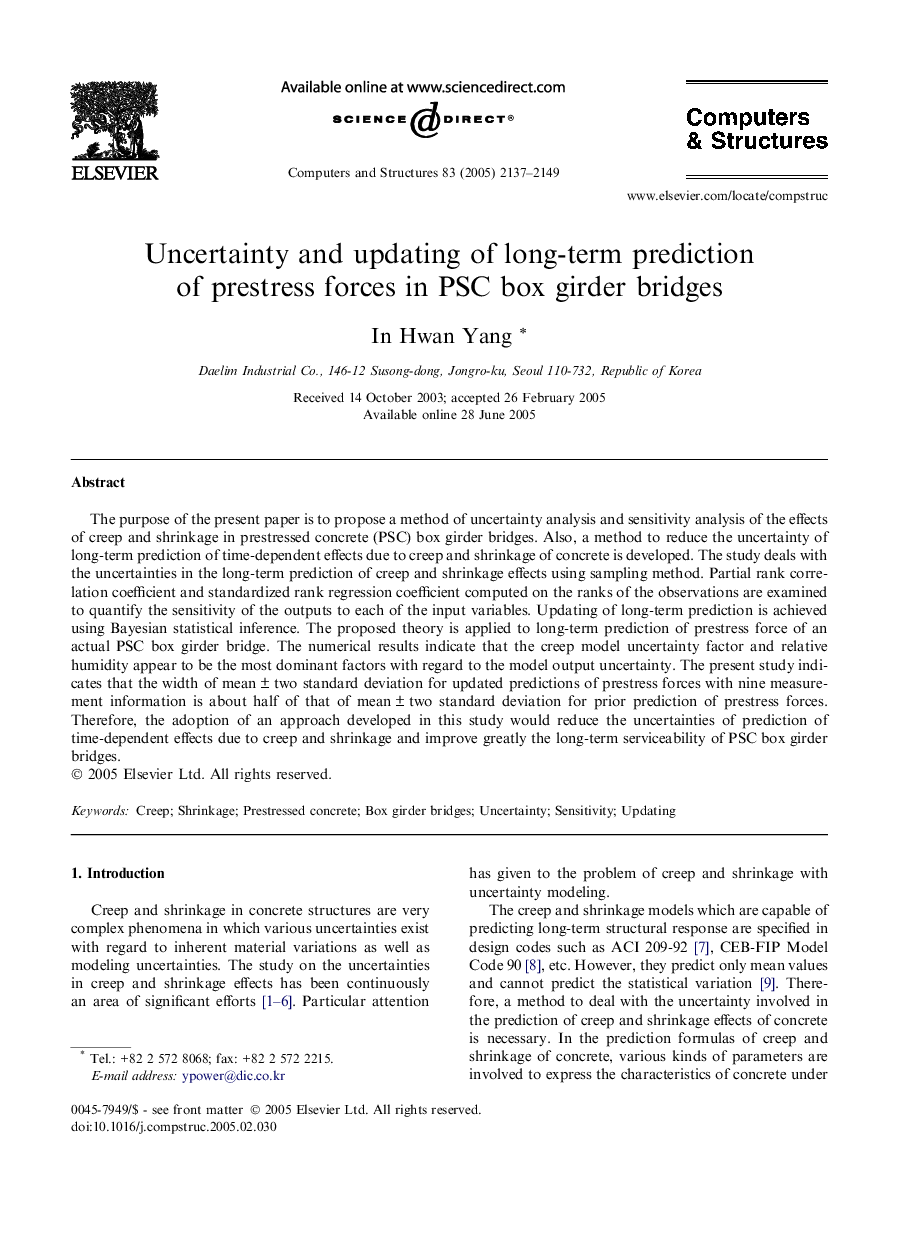| Article ID | Journal | Published Year | Pages | File Type |
|---|---|---|---|---|
| 510710 | Computers & Structures | 2005 | 13 Pages |
The purpose of the present paper is to propose a method of uncertainty analysis and sensitivity analysis of the effects of creep and shrinkage in prestressed concrete (PSC) box girder bridges. Also, a method to reduce the uncertainty of long-term prediction of time-dependent effects due to creep and shrinkage of concrete is developed. The study deals with the uncertainties in the long-term prediction of creep and shrinkage effects using sampling method. Partial rank correlation coefficient and standardized rank regression coefficient computed on the ranks of the observations are examined to quantify the sensitivity of the outputs to each of the input variables. Updating of long-term prediction is achieved using Bayesian statistical inference. The proposed theory is applied to long-term prediction of prestress force of an actual PSC box girder bridge. The numerical results indicate that the creep model uncertainty factor and relative humidity appear to be the most dominant factors with regard to the model output uncertainty. The present study indicates that the width of mean ± two standard deviation for updated predictions of prestress forces with nine measurement information is about half of that of mean ± two standard deviation for prior prediction of prestress forces. Therefore, the adoption of an approach developed in this study would reduce the uncertainties of prediction of time-dependent effects due to creep and shrinkage and improve greatly the long-term serviceability of PSC box girder bridges.
